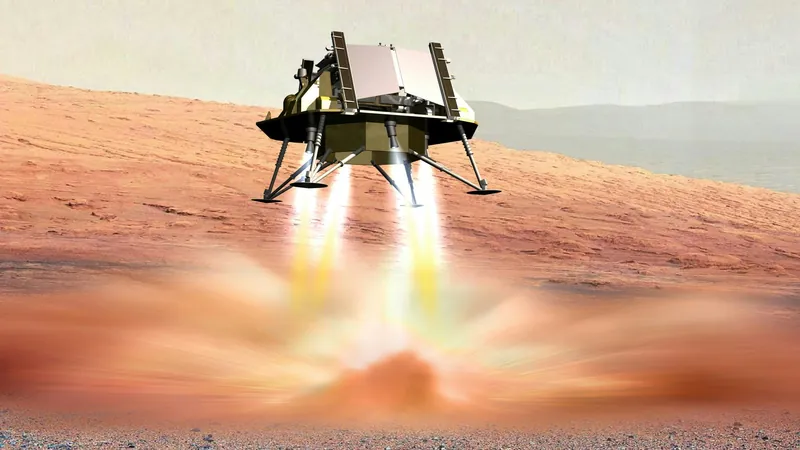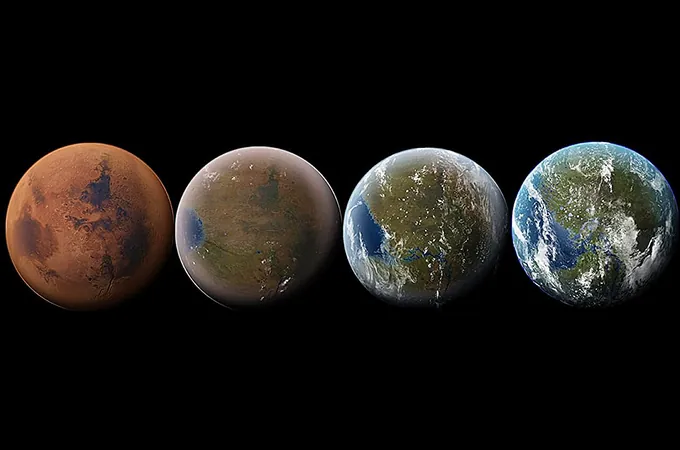
Airbus to Create Revolutionary ExoMars Lander for Groundbreaking Rosalind Franklin Rover Mission
2025-04-02
Author: Yu
In an exciting leap for interplanetary exploration, Airbus has been officially chosen by the European Space Agency (ESA) and Thales Alenia Space (TAS) to design and build the critical landing platform for the ExoMars mission. This platform is essential for safely delivering the Rosalind Franklin rover to the Martian surface, marking a significant milestone in humanity's quest to uncover the secrets of Mars.
Mission Overview
The mission aims to land on Mars in 2030 after a careful entry and descent process, utilizing a parachute-assisted braking phase. Airbus will ensure that the landing platform securely touches down, setting the stage for the rover's deployment.
Statements from Key Figures
Kata Escott, Managing Director of Airbus Defence and Space UK, expressed the importance of this project, stating, "The successful landing of the Rosalind Franklin rover is the result of over two decades of international collaboration. We are thrilled to have developed the rover in our advanced facilities in Stevenage, and we are committed to its safe journey to Mars. This mission marks a new era of exploration as Rosalind Franklin will be the first rover capable of analyzing soil samples from two meters underground in the search for signs of past or present life."
UK Technology Secretary Peter Kyle added that this project signifies a remarkable achievement for British science. "By landing the first home-grown rover on Mars, Airbus is helping the UK lead the European space race. This initiative will create hundreds of skilled jobs, driving investment and securing the UK's future."
Technical Aspects of the Lander
Under the contract with TAS, Airbus is set to engineer the mechanical, thermal, and propulsion systems essential for ensuring a safe landing of the Rosalind Franklin rover. Key features will include a sturdy landing structure, a powerful propulsion system to provide the necessary braking, and stable landing gear. Additionally, the lander will feature dual ramps to facilitate the rover's descent to the Martian surface, optimizing its path to minimize risk.
Airbus has a reputation for excellence in space technology, having designed over 120 propulsion systems for more than 90 spacecraft across various missions, including telecommunications and Earth observation. The ExoMars landing platform will need to decelerate from a speed of 45m/s to under 3m/s using retro rockets—a sophisticated engineering feat.
Timeline and Challenges
Originally slated for launch in 2022, the Rosalind Franklin mission faced delays due to geopolitical tensions arising from the conflict in Ukraine. However, collaborations with TAS, ESA, and NASA continue to evolve. Preparations are underway for the rover to launch on a NASA-provided rocket in 2028, including innovations like Radioisotope Heater Units (RHUs) to keep the rover warm amidst Mars' cold nights and new software capabilities for quick post-landing autonomy.
Looking Forward
As the countdown to the rover's touchdown in 2030 continues, excitement builds not only for its mission to find life on Mars but also for the advancements this project brings to space exploration technology and international collaboration. Will Rosalind Franklin uncover the first proof of life beyond Earth? Only time will tell, but the stakes couldn't be higher!

 Brasil (PT)
Brasil (PT)
 Canada (EN)
Canada (EN)
 Chile (ES)
Chile (ES)
 Česko (CS)
Česko (CS)
 대한민국 (KO)
대한민국 (KO)
 España (ES)
España (ES)
 France (FR)
France (FR)
 Hong Kong (EN)
Hong Kong (EN)
 Italia (IT)
Italia (IT)
 日本 (JA)
日本 (JA)
 Magyarország (HU)
Magyarország (HU)
 Norge (NO)
Norge (NO)
 Polska (PL)
Polska (PL)
 Schweiz (DE)
Schweiz (DE)
 Singapore (EN)
Singapore (EN)
 Sverige (SV)
Sverige (SV)
 Suomi (FI)
Suomi (FI)
 Türkiye (TR)
Türkiye (TR)
 الإمارات العربية المتحدة (AR)
الإمارات العربية المتحدة (AR)